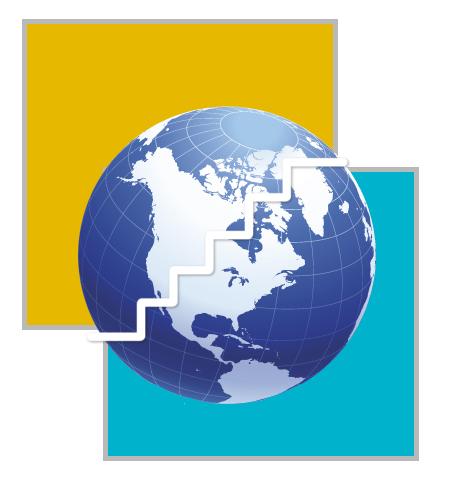MEDIA
What does the global future look like, if you are contemplating it from Mumbai? To answer that question, GBN hosted an evening with Sundeep Waslekar, president of the Strategic Foresight Group, an India-based think tank that specializes in issues of geopolitics and global security and does a fair amount of scenario work on terrorism, conflict resolution, and the geographies in and around India. Sundeep, who was educated at Oxford on a scholarship he was awarded for challenging the structure of the international development finance, has made a career of addressing and negotiating tough questions. In the early 1990s he brought together 26 former heads of government and foreign ministers to conceptualize phased elimination of nuclear weapons. Later he was involved in backdoor negotiations between India and Pakistan to de-escalate tensions, and in the last few years has become the most significant facilitator of dialogue between Western and Islamic political leaders for deconstructing terror.
Sundeep began his GBN Presents talk by posing a critical question for the future of India, China, and the world�€™s other emerging economies: how cohesive is the process of growth and dynamism in these places going to be over the next 20 years? According to Sundeep, it will largely depend upon how much we expand the �€œcircle of growth�€ (reflected in the relative size of the emerging and established business class) in these nations and how much we shrink the �€œcircle of despair�€ (the segment of the population that continues to live in bad conditions with few prospects). Expand the first while contracting the second, and there will be hope�€”and that hope will have a cyclical effect.
While India and China are already on a path of growth, Sundeep said that he �€œwould not take bets�€ on whether they will succeed on that path: there is a real risk that either or both could veer off onto the path of despair. He added that the polarization in the growth process that India and China are experiencing is hardly unique to them. There are segments of the European economy that are stagnant and getting more so; segments of the population in the U.S. are seeing a loss in their income. In the Middle East, there are segments that are flush with oil money, at the same time that there are 20 million unemployed young men. The big challenge for the world is the same as the great challenge for India: how do you promote growth over despair?
Sundeep then talked about some of the drivers that will determine whether growth or despair prevails. He named four big ones:
The condition of farmers. The future of India and China depends more on farmers than all of the IT and software and high-tech people in these countries put together, he explained. In both countries there is a major challenge on the agrarian front, and what happens in the next 20 years will to a large extent depend on what the farmers in these two countries do, and how their conditions change. As China and India�€™s economies grow, so too does unrest among farmers. Ten years ago, 50 of the 600 districts in India were under the influence of agrarian terrorists; now 150 of the 600 are under their influence. Ten years ago, there were about 7,000 agrarian protests in China; last year there were 70,000.
Energy. Both China and India�€™s dependence on energy, particularly oil and gas, will go up substantially in the next 20 years. India currently imports 70 percent of its oil; this will increase to 90 percent by 2020. China imports only 30 percent of its oil requirement, but China�€™s 30 percent is more than India�€™s 70 percent, and China will also increase its imports substantially by 2020. So what happens in the major oil exporting countries is a critical factor. These regions will experience a tremendous amount of turmoil in the next 20 years whether we like it or not.
The role of the U.S. There is a conceptual division in the way the U.S. is viewed by the world right now, Sundeep said. While the U.S. will continue to be a �€œsuperforce�€ in the next 20 years, in terms of its military and technological strength, it will not continue to be a �€œsuperpower.�€ For the first time, we�€™re seeing a split between superpower and superforce: one part declining while the other is strengthening. One outcome of this split is that the U.S. is losing its leadership of the community of values. The U.S. was a great nation from 1945 to 2001, Sundeep argued, not because it had the greatest military or technology but because it was the most prominent leader of a community of values. Since the Iraq war, the biggest damage to the global security infrastructure is that American leadership on this front has been questioned and has eroded. As a result, U.S. assets and interests are going to be challenged more and more by terrorists, extremists, and all kinds of groups. This is a serious problem not only for the U.S. but for the world at large.
The nation-state. In the last 150 years, we have slowly created a globally integrated economy. But we haven�€™t created a global polity or a global society, Sundeep said. So how do we manage a fast, integrating global economy in a scenario in which there is a fast, polarizing global polity and a fast, polarizing global society? Unless we consciously intervene at this stage and create processes, mechanisms, institutions, and systems of global polity and global society, Sundeep argued, we will witness the global economy integrating while the global polity disintegrates. This split will promote more extremism and allow for the emergence of still more groups and non-state actors that stand outside the domain of influence of the nation-state. The Treaty of Westphalia, signed in 1648, has stood us in good stead. But will it celebrate its 400th anniversary? Between now and 2048, what will happen to the future of nations.





